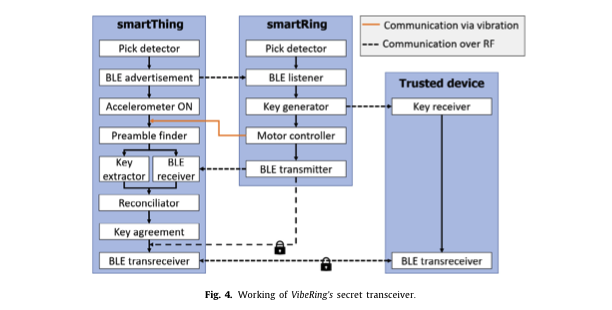Health-oriented smart devices, such as a blood-glucose monitor, collect meaningful data when they are in use and in physical contact with their user. The smart device’s (“smartThing’s”) wireless connectivity allows it to transfer that data to its user’s trusted device, for example a smartphone. However, an adversary could impersonate the user and bootstrap a communication channel with the smartThing while the smartThing is being used by an oblivious legitimate user.
To address this problem, in this paper, we investigate the use of vibration, generated by a smartRing, as an out-of-band communication channel to unobtrusively share a secret with a smartThing. This exchanged secret can be used to bootstrap a secure wireless channel over which the smartphone (or another trusted device) and the smartThing can communicate. We present the design, implementation, and evaluation of this system, which we call VibeRing. We describe the hardware and software details of the smartThing and smartRing. Through a user study we demonstrate that it is possible to share a secret with various objects quickly, accurately and securely as compared to several existing techniques.

Sougata Sen and David Kotz. VibeRing: Using vibrations from a smart ring as an out-of-band channel for sharing secret keys. Journal of Pervasive and Mobile Computing, volume 78, article 101505, 16 pages. Elsevier, December 2021. doi:10.1016/j.pmcj.2021.101505. ©Copyright Elsevier. Revision of sen:vibering.


